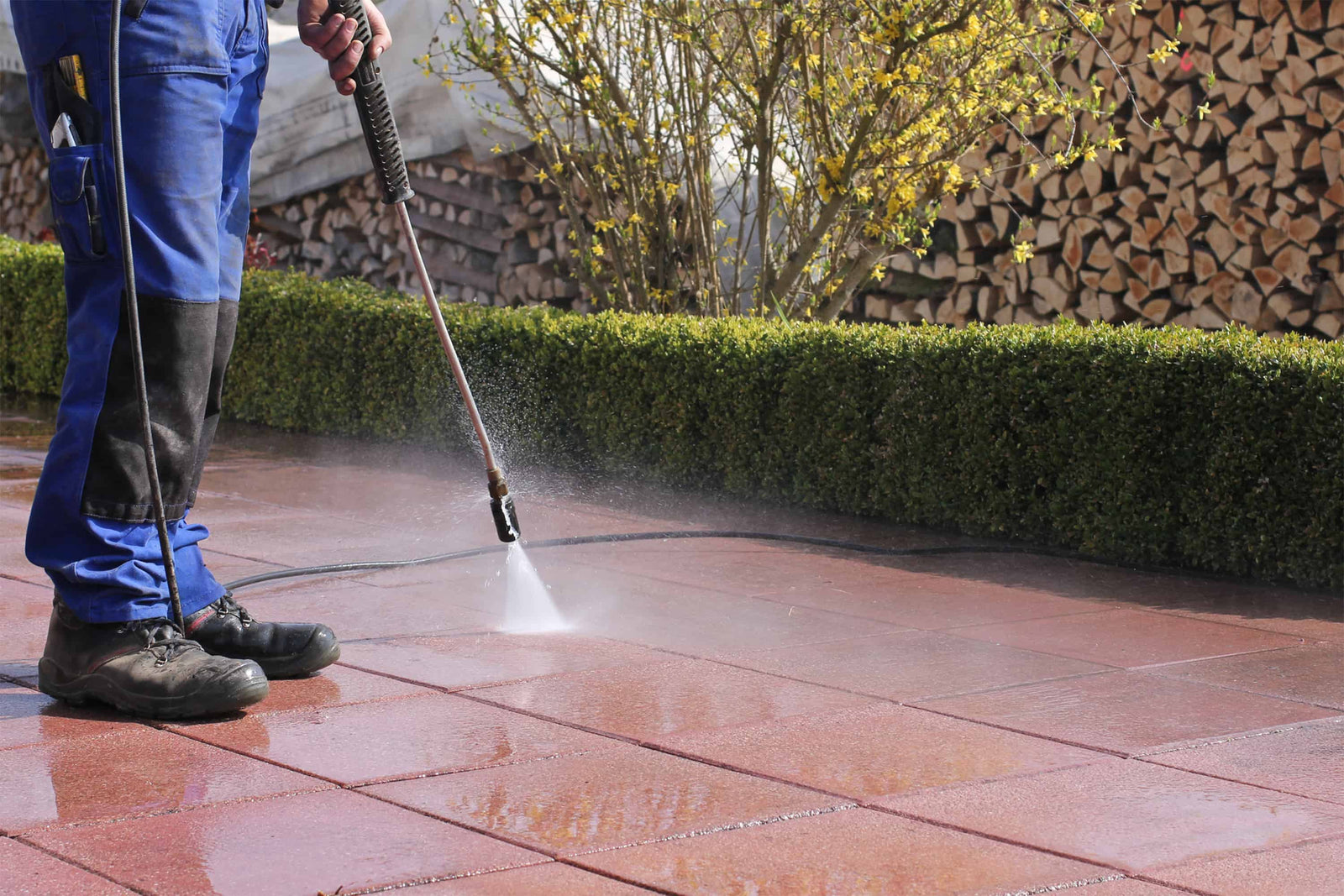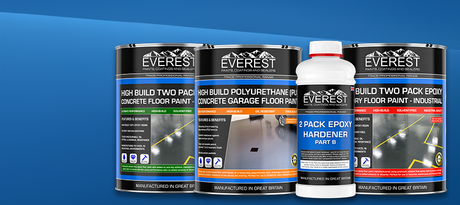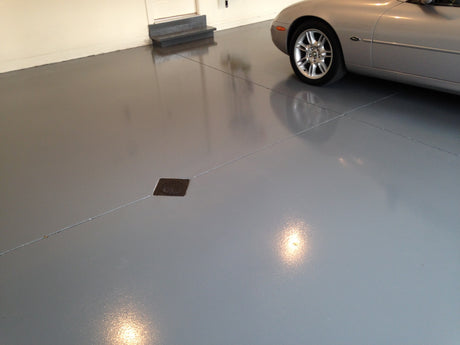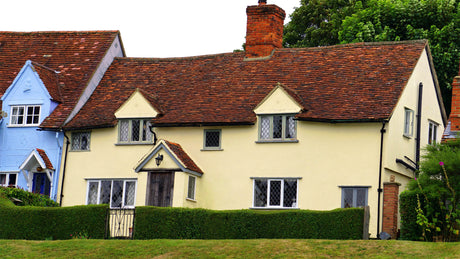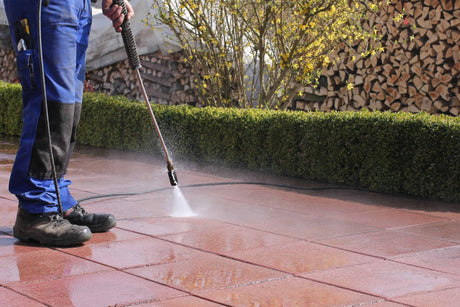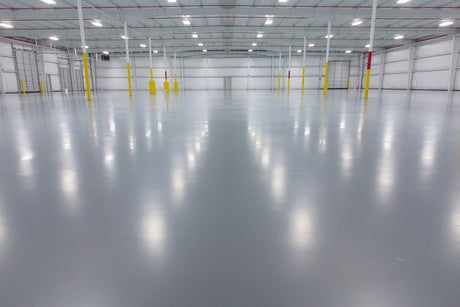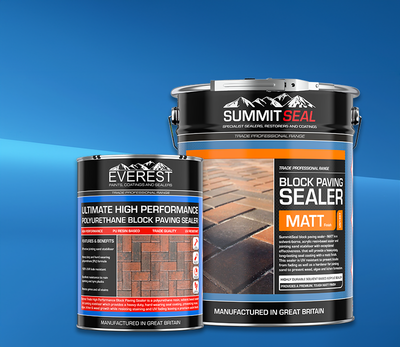INTRODUCTION
Sealing block paving is a straight forward job – and with the right materials, it’ll keep your driveway or patio looking fantastic for years to come. With a bit of regular maintenance, sealing protects your paved areas from the elements as well as preventing weed growth, making sure your paved areas stays looking as good as new.
We have detailed the cleaning and application process below, this is for both new and existing block paving, please ensure new block paving has been down at lead 28 days prior to application of a sealer to ensure no efflorescence forms.
We have linked the products we recommend for the job in the guide below, other products can be used, but these products have been tried and tested by ourselves and are the best products for the job in our opinion.CLEANING YOUR PATIO OR DRIVEWAY - STEP 1
The first step is always to clean your driveway. Good preparation is key to a long-lasting, well-performing sealer coating.
STEP 1a: Mould, Algae and Lichen Removal (If Applicable)
A pressure washer will often suffice for relatively clean surfaces, However for surfaces with a lot of mould, algae or lichen build up we highly recommend applying the Everest Trade Paints Ultimate Driveway Cleaner this is a very easy product to use that will kill any mould, lichens, and algae build up on the blocks.
Simply Dilute as instructed, then using a low-pressure water sprayer or watering can fitted with a rose, saturate the area and leave to dry. This product is a biocide and will kill the growths, while also preventing further regrowth.
STEP 1b: Removing Oil Stains (If applicable)
To remove tougher oil or grease stains we suggest Everest Trade Paints Oil Stain Remover. Pour the product on to the oil or grease stain, ensuring the stain is completely covered, don't over-apply the product, make sure the stain is covered with a thin coat. Simply leave until totally dry (minimum 3-4 hours). Cold or humid conditions will slow drying times. Once dried, the area should be swept with a stiff broom to remove the dried product. Hose down the treated area to ensure all powder residue is completely removed.
STEP 1c: Pressure washing the surface.
This step isn't optional and should be done if you've used either of the above products or not.
Pressure wash the surface to remove any contaminants, we also recommend pressure washing the joints LIGHTLY to remove a little of the old sand to allow room for the new sand you will add later.
Whichever method of cleaning you should choose, remember to allow your driveway to completely dry.SANDING / RE-SANDING JOINTS - STEP 2
Once your driveway is clean and dry, use a broom and jointing sand (or kiln dried sand) to fill the joints between bricks. Brush a thin layer of sand over the whole area, and work the broom back and forth to fill all joints. Ensure the sand is of a consistent level, The sand should be around 1cm below the face of the block to avoid issues with the sand coming into contact with the roller when applying the Block Paving Sealer. Sweep away the rest of the jointing sand, so you’re ready to seal the area.APPLYING THE BLOCK PAVING SEALER - STEP 3
The drying times and coverage information below is based on our recommended Block Paving Sealer: Everest Trade - Block Paving Sealer - High-Performance - Premium Polyurethane Sealer, This is a highly durable, long-lasting block paving sealer that's perfect for domestic, commercial and industrial surfaces.
Before you begin sealing the area, ensure that rain is not anticipated for at least 24 hours to allow sealer to dry.
Block paving sealers can be applied by sprayers, rollers or brushes. Sprayers will provide the best results as it is less likely that the Block Paving Sealer will interfere with the sanded joints. Brushes and rollers are fine for application, but take care when sealing over joints for best results.
RECOMMENDED APPLICATION TOOLS
The sprayer we recommend is the: Marolex Industry 12 - 12 Litre Professional Sprayer
The roller kit we recommend is the: ProDec Professional 12" Roller Application Kit - Double Arm
Roll on the first coat of Block Paving Sealer, ensure that it’s applied thoroughly between the joints. When there is sufficient coverage, the colour of the jointing sand turns darker. You’ll typically cover about 5m² per litre of sealer for the first coat. If you put more than this down, the mix may be too thick to begin the sealing process. Put down less and you won’t get full coverage. Leave to dry for 3-4 hours, depending on the weather.
Once the first coat is touch dry and no longer tacky to the touch you can begin to apply the second coat. The second coat can be applied the same way but will cover more area as the surface is less porous covering approximately 7m² per litre. Allow the area to dry for at least 24 hours to allow the sealant to fully take effect. In summer leave several hours before walking on it, or a day before driving on the surface. In winter, ensure you keep the area free from traffic for even longer.ALL DONE
That's it! That's all it takes to seal your driveway or patio from weather damage, fading, biological growths and general wear and tear for years to come.

